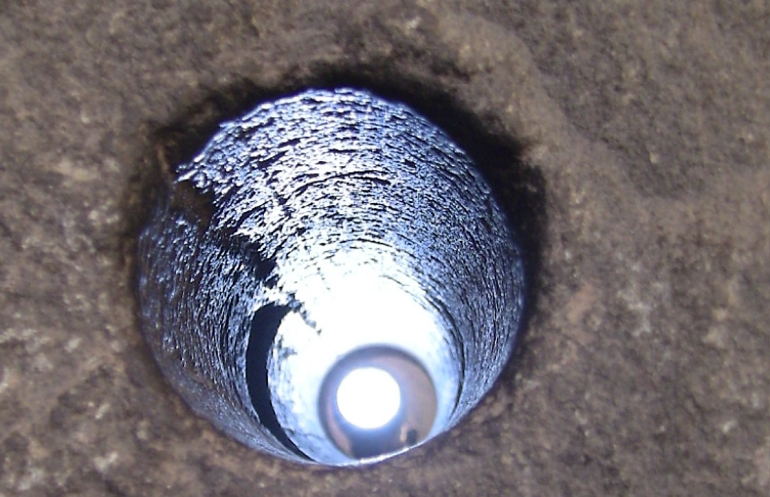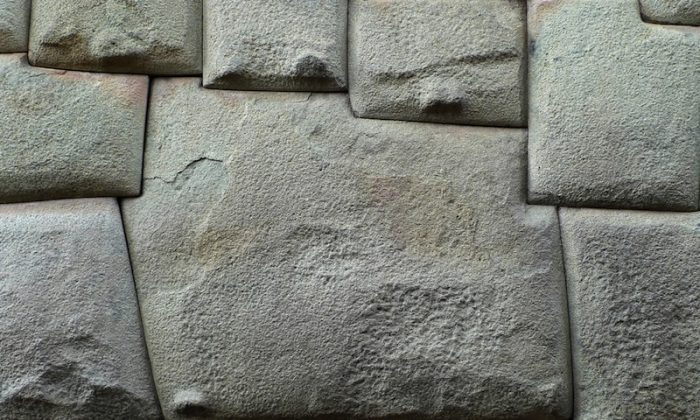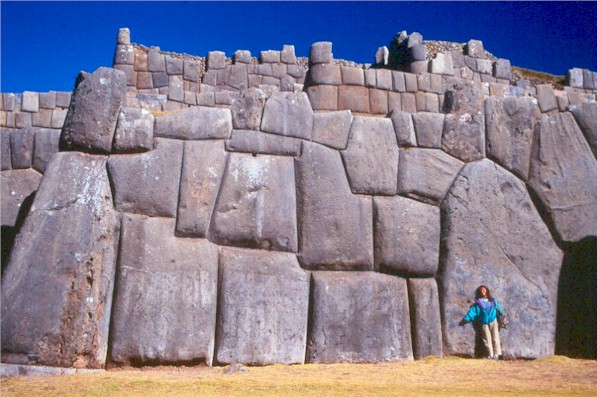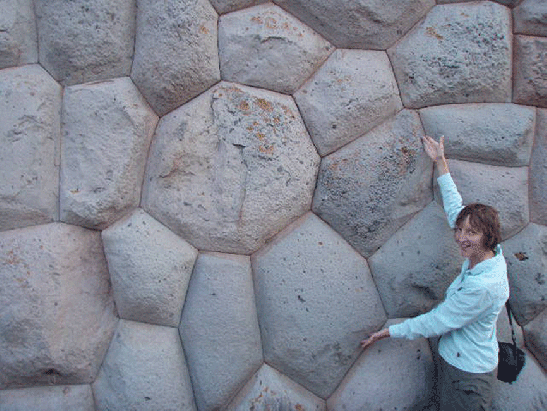It looks like you're using an Ad Blocker.
Please white-list or disable AboveTopSecret.com in your ad-blocking tool.
Thank you.
Some features of ATS will be disabled while you continue to use an ad-blocker.
share:
Thanks for the thread.....really cool theory by the way.
I totally get where you are coming from. What I'd like to know though is, if they had the technology to do this, how the hell did they bore holes into this rock?

Or do this?

Or this?:

Or for that matter....this:

From my (limited) knowledge, aren't these walls made of the same rock?
I totally get where you are coming from. What I'd like to know though is, if they had the technology to do this, how the hell did they bore holes into this rock?

Or do this?

Or this?:

Or for that matter....this:

From my (limited) knowledge, aren't these walls made of the same rock?
Casting is an interesting concept, but I am afraid it wouldn't work on these objects.
In order for a mold to open without destroying the casting or the mold there have to be significant draft angles at the parting lines. All the 90 degree angles would not survive the process of removal from the mold without damaging the casting and/or the mold. Draft angles allow the mold to be opened without galling or scraping the casting during removal. If these stones show no signs of abrasion they were not cast and removed from what we would consider traditional molds.
About the only way it could be done is if the molds were disposable. Used once then destroyed during removal to leave the unblemished casting behind. What ever that mold was made of would have to withstand the pressures and temps of the casting itself. If the molds were made of strong wood, and coated with clay to the proper casting dimensions and allowed to cure, it might be strong enough to handle the casting. Once the casting is set the clay could be carefully chipped away leaving no tool marks on the casting and the wood frame removed to be relined with clay and used again.
This is the best conclusion I can come up with. All those concentric 90 degree steps with sharp corners and no draft angles could never be achieved on a finished product by pulling a mold apart and removing a casting. Using todays technology draft angles are usually in the 2 -3 degree range regardless of the thickness of the casting.
In order for a mold to open without destroying the casting or the mold there have to be significant draft angles at the parting lines. All the 90 degree angles would not survive the process of removal from the mold without damaging the casting and/or the mold. Draft angles allow the mold to be opened without galling or scraping the casting during removal. If these stones show no signs of abrasion they were not cast and removed from what we would consider traditional molds.
About the only way it could be done is if the molds were disposable. Used once then destroyed during removal to leave the unblemished casting behind. What ever that mold was made of would have to withstand the pressures and temps of the casting itself. If the molds were made of strong wood, and coated with clay to the proper casting dimensions and allowed to cure, it might be strong enough to handle the casting. Once the casting is set the clay could be carefully chipped away leaving no tool marks on the casting and the wood frame removed to be relined with clay and used again.
This is the best conclusion I can come up with. All those concentric 90 degree steps with sharp corners and no draft angles could never be achieved on a finished product by pulling a mold apart and removing a casting. Using todays technology draft angles are usually in the 2 -3 degree range regardless of the thickness of the casting.
From the very first time I saw the Puma Punku site, it struck me as some sort of foundry. The single megalith slab that seemed to have pieces that
were almost modular in design.
One thing of note. The Tiwanaku plain is fairly sparse with lumber and that's being generous. One would think that wood would be something of fairly great value and not disposable. IDK.
Very good read and an interesting perspective.
One thing of note. The Tiwanaku plain is fairly sparse with lumber and that's being generous. One would think that wood would be something of fairly great value and not disposable. IDK.
Very good read and an interesting perspective.
After seeing the coral house documentary and what 1 man could do.
Imagine what one man and thousands of slaves could accomplish.
These are are man made
Imagine what one man and thousands of slaves could accomplish.
These are are man made
a reply to: Bloodworth
Man made is most likely the most probable solution. BUT, with what tools and techniques did they use and who taught them?
Man made is most likely the most probable solution. BUT, with what tools and techniques did they use and who taught them?
Really great thread.
It has made me think.
There is so much more for us to learn about the ancient engineers. I wonder, could magma flows have been redirected towards molds and then allowed to cool?
No, that's probably very stupid. Anyway, this was really interesting, thanks for sharing
It has made me think.
There is so much more for us to learn about the ancient engineers. I wonder, could magma flows have been redirected towards molds and then allowed to cool?
No, that's probably very stupid. Anyway, this was really interesting, thanks for sharing
This subject always gets back to how in the world did some of the enormous stones that weigh in the 100 of tons ever get moved...This stuff is is
awesome but remains a mystery....I think giants moved the large stones,it could be possible they carved those stones with some kind of acid
mud..
edit on 18-3-2019 by Jobeycool because: (no reason given)
originally posted by: jeep3r
We may now be one step closer to solving an ancient mystery that has baffled archaeologists from around the world for ages. Many of us have always wondered just how the magnificent builders of ancient cultures managed to work with megalithic stones in such a way that we still marvel at their precision and execution up to this very day. Puma Punku is one of those places where incredible megalithic artwork can be found and we may now have the evidence to prove that the ancients were capable of softening stone with a method unknown to us today.
With this thread I'm combining two relatively recent findings to make a compelling case for the use of molding and stone softening techniques at Puma Punku in ancient times. One of these findings comes from the field of material sciences using electron-microscopic analyses (spoiler alert: the stone surfaces show no signs of abrasion through cutting tools)
Is this in Davidovits' paper? Because it's not in your quote from it here:
The surface is very flat, without any trace of polishing action with abrasive grains nor cutting tools, but dotted with small holes that are 0.5–1mm in diameter and 0.2–0.5mm deep with clear edges.
N0 mentione there of any microscopic examination of the surface.
Also, there's this from the abstract:
Organic matter is very unusual, if not impossible in a solid volcanic stone and suggests ceramic-like man-made stone.
That turns out not to be the case:
Although carbon-based lavas, known as carbonatites, are found throughout history, the Oldoinyo Lengai volcano, located in the East African Rift in northern Tanzania, is the only place on Earth where they are actively erupting.
Science Daily
I simply don't trust Davidovits after he was disproven by Dipayan Jana on the stones in the Egyptian pyramids, and apparently has never responded to the refutation provided. link
Short powerpoint version of the above findings here
Harte
If these rocks were created using molds, are there any wood grain impressions on the stones? Look at pretty much any concrete we make and you'll see
traces left on the stones of the wood from the molds. I suppose they could polish the rocks to take out the wood grain, but that seems like a whole
lot of work. Or maybe the molds weren't made of wood, but something else. But what?
originally posted by: Phage
a reply to: Blue Shift
Diorite?
Kidding. I'm kidding.
I don't think you could just use compressed sand to create a mold, like a lost wax casting. That wouldn't leave a wood grain impression. But I don't think it would work because of the density and the water that would be in the concrete mix. Just trying to think of a way it might work. And again, where are the rock crushing sites? Those would be hard to miss and they'd stay around for a long time.
originally posted by: micpsi
Sorry, but your explanation does not fit the evidence. The implication of moulding would be that every H-block would look the same since they came from the same one (or few) moulds. Unfortunately for your theory, the several dozen examples that exist are ALL different - they were made individually. Your theory presumes ones of the myths of Puma Punku, namely, that the H-blocks were mass-produced somehow. On the contrary,they show small differences indicating that they were made individually and certainly NOT from one or two slightly different moulds. One would expect to find at least two that are identical. Instead, one encounters NONE that look the same. As for the one with a dodgy inside corner, well, that one made by an apprentice got past the quality inspector, didn't it? I mean, not even the Pumu Punku craftsmen were perfect!
Maybe the moulding process required that the outer mould be destroyed as the formed inner block was released? That would explain why no two of the H blocks were identical.
I think that this is all a possible reality. My problem is how did they create the energy required to do so? I have read and seen a few things on
doing such a thing with harmonics, and even paltry examples. But I think it must have been something like that.
Magic at first and then laughter.
More scotch please.
Magic at first and then laughter.
More scotch please.
originally posted by: Phage
a reply to: Blue Shift
Diorite?
Kidding. I'm kidding.
Ancient aliens kept saying it was Diorite, and now a lot of people believe it.
An unfortunate situation for all.
originally posted by: Jobeycool
This subject always gets back to how in the world did some of the enormous stones that weigh in the 100 of tons ever get moved...This stuff is is awesome but remains a mystery....I think giants moved the large stones,it could be possible they carved those stones with some kind of acid mud..
I'm starting to wonder if maybe the reason we see so many big stones getting moved in the far ancient times, but smaller blocks in more recent ancient times...
Is because of the transition from animal herding to full agriculture?
I mean, if people are mostly living a pastoral lifestyle with large flocks of animals, then they would have lots of draft animals available to move big stones. And because it is their livelihood, most of your citizens would have at least some skill at controlling those animals.
If they had strong enough ropes, their herd would provide the muscle.
But if your whole society is centered on planting and harvesting, people would be more focused on working directly with their own hands. Draft animals are useful in some parts of farming, but most of it is done with hand tools.
a reply to: bloodymarvelous
I think diorite molds would be great. Very durable.
But wax is easier. It also makes a very good releasing agent. I wonder if traces might be evident.
I think diorite molds would be great. Very durable.
But wax is easier. It also makes a very good releasing agent. I wonder if traces might be evident.
edit on 3/19/2019 by Phage because: (no reason given)
One idea to take into account is the following. If some stones were done in a mould, one easy way to create a hole is by putting a tube in beforehand.
Once the concrete has gone off slightly, you spin the tube and this makes it easier to remove. At the same time, it would leave a very shiny hole that
viewed hundreds of years later would appear to have been drilled. Just an idea that is worth considering. as reply to:
CaptainBeno
a reply to: CaptainBeno
Electric Discharge Machining (EDM)
Some of the holes drilled through these stones are not straight, and many have wondered how a conventional drill could accomplish this. Well, with EDM the electrode can be flexible and bed around corners, as long as it doesn't short out you are good.
Some have found holes drilled in stones that are not round, but star shaped, hexagon shaped, square shaped, etc. wondering how it is possible. With EDM the electrode can be any shape and it will cut through with that shape.
Now, where they got the power to do this is a funny story.
Electric Discharge Machining (EDM)
Some of the holes drilled through these stones are not straight, and many have wondered how a conventional drill could accomplish this. Well, with EDM the electrode can be flexible and bed around corners, as long as it doesn't short out you are good.
Some have found holes drilled in stones that are not round, but star shaped, hexagon shaped, square shaped, etc. wondering how it is possible. With EDM the electrode can be any shape and it will cut through with that shape.
Now, where they got the power to do this is a funny story.
edit on 19-3-2019 by More1ThanAny1 because: (no reason given)
new topics
-
What Am I Hearing
General Chit Chat: 7 hours ago
top topics
-
A Bunch of Maybe Drones Just Flew Across Hillsborough County
Aircraft Projects: 13 hours ago, 7 flags -
Who's coming with me?
General Conspiracies: 15 hours ago, 4 flags -
What Am I Hearing
General Chit Chat: 7 hours ago, 1 flags
active topics
-
Remember when Iraq invaded Kuwait
History • 27 • : andy06shake -
A Bunch of Maybe Drones Just Flew Across Hillsborough County
Aircraft Projects • 20 • : network dude -
Who's coming with me?
General Conspiracies • 31 • : putnam6 -
-@TH3WH17ERABB17- -Q- ---TIME TO SHOW THE WORLD--- -Part- --44--
Dissecting Disinformation • 3634 • : angelchemuel -
Will all hell break out? Jersey drones - blue beam
Aliens and UFOs • 41 • : angelchemuel -
Drones everywhere in New Jersey
Aliens and UFOs • 72 • : ufoorbhunter -
What Am I Hearing
General Chit Chat • 3 • : theatreboy -
And Here Come the Excuses!!
General Conspiracies • 160 • : Lazy88 -
Rant. I am sick of people saying the police are revenue raising.
Rant • 10 • : PorkChop96 -
From the MUSK-RAMASWAMY Department of Government Efficiency commission - DOGE.
Above Politics • 62 • : Irishhaf
